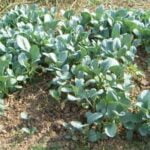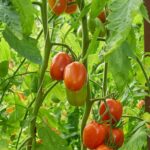Borax, a common household substance, has gained attention as a potential tool for improving vegetable gardens. However, there are concerns about its safety and impact on soil health and plant growth. In this article, we will explore the role of borax in vegetable gardens and evaluate its pros and cons.
We will also address common myths surrounding its use and provide safe application techniques. By understanding the effects of borax on soil, nutrients, and plants, gardeners can make informed decisions about incorporating it into their gardening practices.
Gardeners often turn to borax as a means to control pests, manage nutrient deficiencies, and enhance plant growth. But what exactly is borax? It is a naturally occurring mineral compound composed of boron, sodium, oxygen, and water molecules. In gardening, borax is typically used as a micronutrient supplement that helps plants metabolize sugars and carbohydrates effectively. By aiding in cell wall development and root growth promotion, it contributes to overall plant vigor.
Despite its potential benefits, there have been concerns raised about the safety of using borax in vegetable gardens. Some worry that it may contaminate the soil or pose risks to human health if consumed through produce consumption. In the following sections of this article, we will examine these safety concerns in detail and dispel common myths associated with the use of borax in vegetable gardens.
Gardening enthusiasts must weigh both the benefits and risks before incorporating any substance into their gardening practices. As we delve deeper into the topic throughout this article’s sections, we will explore how borax affects soil health and nutrient availability while also considering its impact on overall plant growth and yield.
By providing alternative organic solutions along with safe application techniques for using borax in vegetable gardens, gardeners can make informed choices that align with their goals for sustainable gardening practices.
What is Borax and How is it Used in Gardening?
Borax, also known as sodium borate, is a naturally occurring mineral compound that has been used for centuries in various industries including agriculture and gardening. It is commonly used in gardening as a natural solution to address nutrient deficiencies in soil and promote healthy plant growth. Borax contains boron, an essential micronutrient that plays a crucial role in the overall health and development of plants.
In gardening, borax is typically used as a soil amendment to correct boron deficiency. Boron deficiency can manifest itself through various symptoms such as poor seed and fruit development, stunted growth, discoloration of leaves, and reduced yield. By applying borax to the soil, gardeners can ensure that their plants have sufficient levels of boron for optimal growth and productivity.
There are several ways to use borax in gardening. One common method is foliar spraying, where a diluted solution of water and borax is applied directly on the leaves of plants. This allows for quick absorption of boron by the plants’ foliage. Another method is incorporating powdered or granular borax into the soil during planting or top-dressing around established plants. This allows for slower release of boron into the soil over time.
It is important to note that while borax can be beneficial for plant health when used appropriately, it should be applied judiciously and with caution. Overuse or improper application can lead to excessive accumulation of boron in the soil, which can be detrimental to both plant health and environmental balance.
In the next section, we will delve deeper into the pros and cons of using borax in vegetable gardens to gain a comprehensive understanding of its impact on soil health and crop yield.
Dispelling Common Myths
Borax has long been a topic of debate in the gardening community, with concerns over its safety lingering among many gardeners. However, it is important to dispel some common myths and address the safety concerns associated with the use of borax in vegetable gardens.
One common myth surrounding borax is that it is highly toxic and harmful to both plants and humans. While it is true that borax can be toxic if ingested or used improperly, when used correctly and in appropriate amounts, it can be safe for both plants and humans.
Borax is a naturally occurring mineral that contains boron, an essential micronutrient for plant growth. In fact, plants require a small amount of boron for various physiological processes, such as cell wall synthesis and flower and fruit development.
Another concern often raised about borax is its potential to accumulate in the soil, leading to elevated levels of boron that may be detrimental to plant health. While this concern has some basis in reality, it is important to note that excessive accumulation of boron in the soil typically occurs only with long-term or excessive use of borax.
By following recommended application rates and using borax judiciously, gardeners can mitigate the risk of over-accumulation of boron in their soil.
To ensure the safe usage of borax in vegetable gardens, there are a few key dos and don’ts that gardeners should keep in mind. First and foremost, always carefully read and follow the instructions provided on the product label. Over-application can lead to increased levels of boron in the soil, thereby harming plants. It is also crucial to avoid applying borax near water sources or areas where runoff can occur as this could potentially contaminate groundwater systems.
In summary, while safety concerns surrounding the use of borax in vegetable gardens exist, many common myths can be dispelled by understanding proper usage guidelines. Borax can be safely incorporated into vegetable gardens to provide essential boron micronutrients for plant growth. By following application instructions and guidelines, gardeners can avoid excessive accumulation of boron in the soil and ensure the safety and health of their plants.
The Pros and Cons of Using Borax in Vegetable Gardens
Pros of Using Borax
One of the main advantages of using borax in vegetable gardens is its effectiveness in controlling pests and fungal diseases. Borax works by dehydrating insects and inhibiting the growth of fungi, thereby reducing the risk of infestation and disease. This can result in healthier plants with better overall yields.
Borax also has the ability to improve soil fertility by providing essential micronutrients. It contains boron, which is a vital element for plant growth and development. Boron aids in various physiological processes, such as cell wall formation, pollen germination, and fruit set. By adding borax to the soil, gardeners can ensure that their vegetables have access to an adequate supply of boron, which can enhance their overall health and productivity.
Furthermore, borax can help deter unwanted weeds from overtaking vegetable gardens. When applied correctly, it acts as a natural herbicide by inhibiting weed seed germination. This reduces competition for resources like water and nutrients, allowing vegetables to thrive without being overshadowed by invasive plants.
Cons of Using Borax
Despite its potential benefits, there are some drawbacks to using borax in vegetable gardens that should be considered. Firstly, excessive use of borax can lead to toxicity in plants. Overapplication or using high concentrations of borax can cause nutrient imbalances and hinder plant growth instead of promoting it. It’s important to carefully follow recommended dosage guidelines when using borax to avoid any negative effects on your vegetable crops.
Additionally, there are safety concerns associated with the use of borax around food-producing plants. While boron is an essential micronutrient for plants, it is toxic to humans if consumed in large amounts. Although the low levels used in gardening are generally considered safe for human consumption when used properly, it is still essential to take precautions such as washing produce thoroughly before eating.
Furthermore, the environmental impact of borax should be taken into consideration. When excess borax leaches into groundwater or reaches bodies of water, it can negatively affect aquatic life. This is particularly concerning in areas with vulnerable ecosystems. Therefore, it is crucial to be mindful of where and how borax is being applied in order to minimize its potential environmental repercussions.
By weighing the pros and cons of using borax in vegetable gardens, gardeners can make an informed decision about whether or not to incorporate this mineral into their gardening regimen. While it can offer benefits such as pest control and improved soil fertility, the potential risks associated with improper use and environmental impact must also be considered.
Exploring Borax’s Effects on Soil Health and Nutrient Availability
Borax, a naturally occurring mineral commonly used in household cleaning and laundry, has also found its way into vegetable gardens as a fertilizer and soil amendment. This section will explore the effects of borax on soil health and nutrient availability in vegetable gardens.
Borax’s Impact on Soil Health
One of the key considerations when using borax in vegetable gardens is its impact on soil health. Borax contains boron, an essential micronutrient required for plant growth. However, excessive application of borax can lead to boron toxicity in plants, affecting their overall health and productivity.
Research suggests that low levels of boron can improve root development and play a role in sugar transport within plants. It also aids in the formation of cell walls, pollen germination, and fruit development. However, excessive levels of boron can hinder plant growth by causing leaf burn, stunted roots, reduced flower production, and even death.
Effects on Nutrient Availability
In addition to its impact on soil health, the use of borax can also affect nutrient availability for plants. Boron interacts with other essential nutrients such as calcium, magnesium, potassium, and zinc. Excessive levels of boron can disrupt the balance between these nutrients, leading to deficiencies or toxicities in plants.
On one hand, small amounts of boron have been found to enhance nutrient uptake by plants. It helps improve calcium mobility within tissues and aids in nitrogen metabolism. On the other hand, excessive levels can interfere with calcium absorption by plants and hinder nutrient uptake.
It is important for gardeners to closely monitor soil nutrient levels when using borax as a fertilizer or soil amendment. Regular soil testing is recommended to assess the levels of essential nutrients and avoid potential imbalances that may arise from the use of excess borax.
By understanding how borax affects soil health and nutrient availability in vegetable gardens, gardeners can make informed decisions about its use and ensure the overall health and productivity of their plants.
Understanding Borax’s Impact on Plant Growth and Yield
Borax, a mineral compound made up of boron, sodium, oxygen, and water molecules, has been used in gardening for many years to promote plant growth and improve the yield of vegetable gardens. Understanding how borax affects plant growth and yield is essential for gardeners considering its use in their own gardens.
The primary role of borax in plants is its ability to regulate certain physiological processes necessary for healthy growth. Boron, the main component of borax, is an essential micronutrient that plays a vital role in cell wall formation, pollen development, hormone regulation, and carbohydrate metabolism. These functions are critical for proper plant growth and development.
Research has shown that the application of borax can have positive effects on plant growth and yield. Adequate levels of boron in the soil promote root development and ensure nutrient uptake by plants. This leads to improved overall plant health and higher yields. Additionally, boron helps to enhance flower production and fruit set in vegetables such as tomatoes and cucumbers.
While the beneficial effects of borax on plant growth are well-documented, it is crucial to understand that excessive use can be detrimental. Over-application of borax can lead to toxicity symptoms in plants such as leaf damage or discoloration. It is therefore essential for gardeners to closely follow recommended dosage guidelines when using borax in their vegetable gardens.
Safe Application Techniques
When it comes to using borax in vegetable gardens, it is important to follow safe application techniques to ensure the health and productivity of your plants. While borax can be beneficial in certain situations, improper use can lead to negative effects on both the soil and the plants themselves. This section will outline some important dos and don’ts for using borax in your vegetable garden.
Dos:
- Test your soil: Before using borax or any other amendment in your vegetable garden, it is recommended to test the pH level and nutrient content of your soil. This will help you determine if using borax is necessary and if so, in what quantity. Soil testing kits are readily available at most gardening centers or through online retailers.
- Apply according to recommended dosage: Just like any other amendment, it is crucial to apply borax according to the recommended dosage. Excessive use of borax can result in a buildup of Boron, which can have detrimental effects on plant growth and development.
- Mix thoroughly with the soil: When applying borax, make sure to mix it thoroughly with the soil to ensure even distribution. This will help prevent concentration build-up in specific areas of the garden.
Don’ts:
- Overapply: As mentioned earlier, excessive use of borax can be harmful to plants. It is important not to overapply borax thinking that more will yield better results.
- Apply directly on plant foliage: Borax should not be applied directly on plant foliage as it can cause leaf burn or even kill the plant. Instead, always apply at ground level around the base of plants.
- Use on new transplants or seedlings: Avoid using borax on new transplants or seedlings as they are more sensitive and susceptible to damage from excess amounts of Boron.
By following these dos and don’ts, you can ensure the safe and effective use of borax in your vegetable garden. It is important to remember that every garden is unique, so it is always a good idea to consult with local gardening experts or extension offices for specific recommendations based on your soil type and plant selection.
Evaluating the Environmental Impact of Borax in Vegetable Gardens
Borax, a commonly used substance in gardening practices, has raised concerns about its potential environmental impact. Evaluating the environmental impact of borax in vegetable gardens is crucial to understanding its long-term effects on ecosystems and biodiversity.
One key aspect to consider is the persistence of borax in the environment. Borax has been found to persist in soil for an extended period, leading to bioaccumulation in plants and potentially affecting the overall ecosystem. Studies have shown that borax can accumulate in plants at levels that may be toxic to certain organisms, such as insects or small animals. Additionally, borax can leach into groundwater or surface water through runoff, potentially contaminating nearby water sources.
Another important consideration is the impact of borax on beneficial soil microorganisms. Soil microorganisms play a vital role in maintaining soil health and nutrient availability for plant growth. Research suggests that excessive use of borax can negatively affect these microorganisms, disrupting the balance of the soil ecosystem. This disruption can lead to decreased nutrient cycling and reduced overall soil fertility.
To minimize the environmental impact of using borax in vegetable gardens, it is important to follow safe application techniques and dosage guidelines recommended by agricultural extension offices or horticulture experts. Additionally, implementing sustainable gardening practices such as organic fertilizers or composting can reduce reliance on chemical inputs like borax.
It is also worth exploring alternative solutions that have minimal environmental impact but still provide similar benefits as borax. Natural substances such as wood ash or coffee grounds have been found to be effective in controlling pests while promoting plant growth. Furthermore, employing integrated pest management strategies such as using companion planting or attracting beneficial insects can help reduce dependence on chemicals altogether.
Evaluating the environmental impact of borax in vegetable gardens requires considering its persistence in the environment, its effects on soil microorganisms, and alternative solutions available. By adopting sustainable gardening practices and utilizing proven alternatives, gardeners can minimize their ecological footprint while still maintaining healthy and productive vegetable gardens.
| Evaluation Aspect | Key Findings |
|---|---|
| Persistence in the environment | Borax can persist in soil for a long time, potentially leading to bioaccumulation in plants and contamination of water sources through leaching. |
| Effects on soil microorganisms | Borax can negatively impact beneficial soil microorganisms, leading to decreased nutrient cycling and reduced soil fertility. |
| Alternative solutions | Natural substances like wood ash or coffee grounds, as well as integrated pest management strategies, offer effective alternatives with minimal environmental impact. |
Alternative Solutions
While borax can be an effective tool in vegetable gardens, some gardeners may prefer to avoid using it due to safety concerns or environmental reasons. Fortunately, there are natural and organic alternatives that can provide similar benefits without the potential drawbacks associated with borax.
One popular alternative to borax is the use of compost and organic matter. Compost is a rich source of nutrients and beneficial microorganisms that can enhance soil fertility and improve plant growth. By incorporating compost into your vegetable garden, you can provide essential nutrients to your plants in a natural and sustainable way. Organic matter, such as well-rotted manure or leaf mulch, can also boost soil health and help retain moisture, reducing the need for additional fertilizers or amendments.
Another option for gardeners seeking alternative solutions is the use of various organic fertilizers. Organic fertilizers are derived from natural sources such as plant materials, animal byproducts, or minerals. They release nutrients slowly over time, providing a steady supply of nutrition to plants without the risk of over-fertilization. Examples of organic fertilizers include bone meal, fish emulsion, seaweed extract, and compost tea. These alternatives not only nourish plants but also improve soil structure and microbial activity.
In addition to compost and organic fertilizers, practicing good cultural practices can contribute to the overall health of your vegetable garden. These practices include crop rotation, proper watering techniques, regular weeding and pest management strategies like biological controls or companion planting. By maintaining a balanced ecosystem within your garden, you can minimize the need for external inputs such as borax or synthetic fertilizers.
Overall, while borax may have its benefits for vegetable gardens, there are viable alternatives that provide similar results without potentially harmful effects on human health or the environment. By exploring these natural and organic alternatives like composting, using organic fertilizers, and implementing good cultural practices, gardeners can create a sustainable and thriving vegetable garden while minimizing the use of potentially harmful substances.
Conclusion
In conclusion, when it comes to using borax in vegetable gardens, there are both benefits and risks to consider. On one hand, borax can be a valuable tool for addressing nutrient deficiencies in the soil and promoting healthy plant growth and yield. It can also be an effective means of controlling certain pests and diseases. However, it is important to weigh these benefits against the potential risks associated with the use of borax.
One key consideration is the impact of borax on soil health and nutrient availability. While small amounts of boron can be beneficial for plants, excessive application of borax can lead to toxicity in the soil, impairing its ability to support plant growth. It is crucial to carefully monitor soil levels and apply borax in moderation to avoid these negative consequences.
Additionally, the environmental impact of borax should not be overlooked. Boron is a naturally occurring element and does not typically persist in the environment for long periods. However, excessive use or improper disposal of borax can lead to accumulation and potential contamination of nearby water sources. It is important to follow safe application techniques and dispose of unused or excess borax properly to minimize these environmental risks.
Considering the potential risks involved, it may be worth exploring natural or organic alternatives to using borax in vegetable gardens. There are several nutrient-rich organic fertilizers available that can provide similar benefits without posing the same risks as borax. Additionally, practices such as crop rotation, companion planting, and proper soil management can help address nutrient deficiencies and promote healthy plant growth without relying on synthetic additives like borax.
Overall, while borax can have its place in vegetable gardening as a means of addressing specific issues, it is important to carefully consider its use and weigh the benefits against the potential risks. By understanding its impact on soil health, plant growth, and the environment, gardeners can make informed decisions about whether or not to incorporate borax into their gardening practices.
Frequently Asked Questions
Can I use borax in my vegetable garden?
Borax can be used in a vegetable garden, but it should be used with caution and in moderation. It can help control certain pests like ants, cockroaches, and some beetles.
However, it is important to note that excessive use of borax can be harmful to plants and soil health. Before using borax in your vegetable garden, it is recommended to first understand the specific pest problems you are dealing with and consult with a local gardening expert or extension service for guidance on appropriate application rates and timing.
What bugs does borax keep away?
Borax is known to deter and repel various bugs and insects. Some common pests that borax can help keep away include ants, cockroaches, silverfish, fleas, termites, and pantry pests such as beetles and moths.
While borax can be effective against these insects when used properly, it is essential to understand that its efficacy may vary depending on the pest species and environmental factors. Additionally, it’s important to follow recommended guidelines for application to ensure the safety of plants, pets, and humans.
How do you neutralize borax in soil?
If you need to neutralize borax in soil, there are a few steps you can take. Start by thoroughly watering the area where borax has been applied or where you suspect its presence in the soil. This helps to flush out any excess borax from the soil profile. Next, consider adding organic matter like compost or well-rotted manure to the affected area.
Organic matter helps improve soil structure and water retention capacity while also promoting microbial activity that aids in breaking down contaminants over time. Finally, monitor plant growth and health regularly after neutralizing borax in soil to ensure any potential adverse effects have been mitigated successfully. It may also be helpful to conduct a soil test periodically to assess if any residual impacts from borax remain so appropriate corrective measures can be taken if needed.

If you’re looking to get into vegetable gardening, or are just looking for some tips on how to make your current garden better, then you’ve come to the right place! My name is Ethel and I have been gardening for years. In this blog, I’m going to share with you some of my best tips on how to create a successful vegetable garden.





